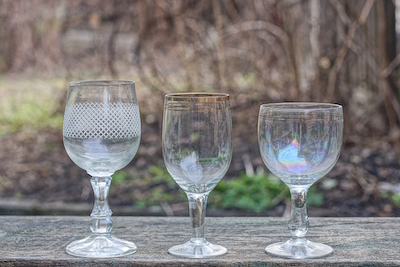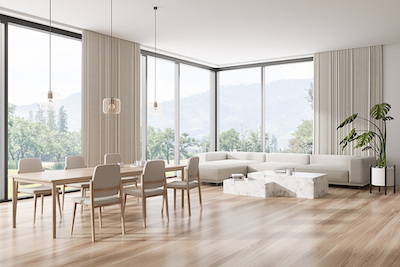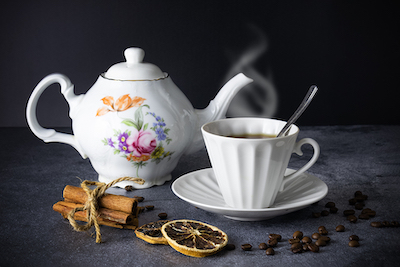Crystal and glass are both known for their transparent, shiny, and aesthetically pleasing appearances. While they might seem similar at first glance, they possess distinct properties that set them apart. This article will delve into the differences between these two materials, their unique characteristics, and their applications in various industries. By the end of this piece, you’ll have a comprehensive understanding of crystal and glass, enabling you to make more informed decisions when purchasing or using products made from these materials.
History of Crystal and Glass
The use of glass dates back to 3500 BC in Mesopotamia, where it was primarily used for making beads and decorative items. The ancient Egyptians and Romans were also known for their glassmaking skills, with the latter even developing a technique called “millefiori” to create intricate patterns in glass.
Crystal, on the other hand, has a more recent history, with its origins in the 17th century. It was during this time that English glassmaker George Ravenscroft discovered lead crystal, a type of glass containing lead oxide. This new material boasted exceptional clarity, brilliance, and weight, making it perfect for creating luxurious glassware and ornamental items.
Key Differences between Crystal and Glass
- Composition
The most significant difference between crystal and glass lies in their chemical compositions. Glass is primarily made from silica (silicon dioxide), which is mixed with various other materials, such as soda (sodium carbonate) and lime (calcium oxide), to create different types of glass. These materials are heated together to form a molten mixture, which is then cooled to produce solid glass.
Crystal, on the other hand, is a subtype of glass that contains lead oxide. The addition of lead oxide to the glass mixture increases its density, refractive index, and overall brilliance. Although the term “crystal” is commonly associated with lead crystal, it is also used to refer to other types of glass with similar properties, such as those made from barium, potassium, or zinc oxides.
- Clarity
One of the most striking differences between crystal and glass is their clarity. Crystal is renowned for its exceptional transparency and brilliance, owing to its increased refractive index compared to traditional glass. The presence of lead oxide or other heavy metal oxides in crystal allows it to bend light more effectively, resulting in a material that sparkles and shines like a diamond.
Regular glass, while still transparent, lacks the same brilliance as crystal due to its lower refractive index. This difference can be easily observed by comparing a crystal wine glass with a regular glass counterpart, as the former will produce a rainbow of colors when exposed to light.
- Weight
Crystal’s high lead content makes it significantly heavier than regular glass. The density of lead oxide gives crystal a substantial and luxurious feel in hand, often making it the preferred choice for high-end glassware and decorative items. Glass, on the other hand, is lighter in weight and more suitable for everyday use.
- Durability
Although crystal is heavier than glass, it is also more fragile. The lead oxide in crystal creates weak points in its structure, making it more susceptible to chipping and breaking. Regular glass, being more homogenous, is generally more durable and resistant to damage.
- Sound
A unique characteristic of crystal is its ability to produce a distinct ringing sound when tapped, known as its “crystal tone.” This musical quality is attributed to the material’s internal structure, which allows it to vibrate more freely than regular glass. Glass, in contrast, produces a dull, muted sound when tapped.
Applications of Crystal and Glass
- Glassware
Both crystal and glass are widely used in the production of glassware, such as wine glasses, champagne flutes, and tumblers. Crystal glassware is often associated with luxury and elegance, thanks to its superior clarity, weight, and ability to enhance the sensory experience of wine or spirits. It is also frequently used for special occasions or formal gatherings. However, due to its fragility, crystal glassware requires extra care when handling and cleaning.
Glass, on the other hand, is a more practical option for everyday use. It is more durable, lighter, and less expensive than crystal glassware, making it suitable for casual dining and gatherings. Glassware made from tempered or borosilicate glass is especially resilient, able to withstand temperature fluctuations and resist breakage.
- Decorative items
Crystal’s remarkable brilliance and refractive properties make it a popular choice for decorative items, such as chandeliers, vases, and figurines. The sparkle of crystal enhances the aesthetics of these items, turning them into statement pieces or focal points in interior design.
Glass, while not as brilliant as crystal, is still widely used in decorative items. It can be molded, colored, or textured to create a variety of visually appealing designs. Glass artists often use techniques like blown glass, fused glass, or stained glass to craft unique and eye-catching pieces.
- Optical instruments
Crystal’s superior clarity and light-bending abilities make it an ideal material for optical instruments, such as lenses and prisms. High-quality optical glass, also known as “crown glass,” is made from a variety of heavy metal oxides, including lead, barium, and potassium, which offer similar refractive properties to lead crystal.
Regular glass, while not suitable for high-precision optical instruments, is used in everyday applications like eyeglasses, mirrors, and camera lenses.
- Art
Both crystal and glass are used as mediums in various art forms. Crystal art, often associated with luxury and prestige, includes intricately carved or etched sculptures and decorative pieces. Glass art, on the other hand, encompasses a wide range of techniques and styles, from traditional stained glass windows to contemporary blown glass sculptures.
Crystal and glass, though visually similar, possess distinct characteristics that set them apart. Crystal is known for its brilliance, weight, and musical quality, making it the preferred choice for luxurious glassware and decorative items. Glass, on the other hand, offers practicality, durability, and versatility in a wide range of applications, from everyday glassware to artistic creations.
Understanding the differences between crystal and glass can help you make informed decisions when purchasing products made from these materials, whether you are seeking elegance and refinement in crystal or the resilience and functionality of glass. No matter your choice, both crystal and glass continue to captivate and inspire with their transparent beauty and timeless charm.














